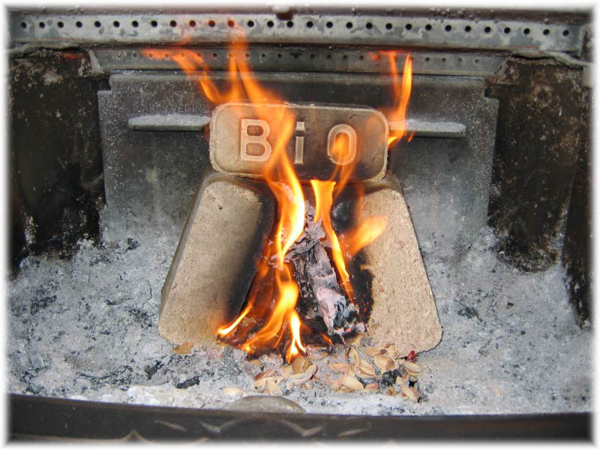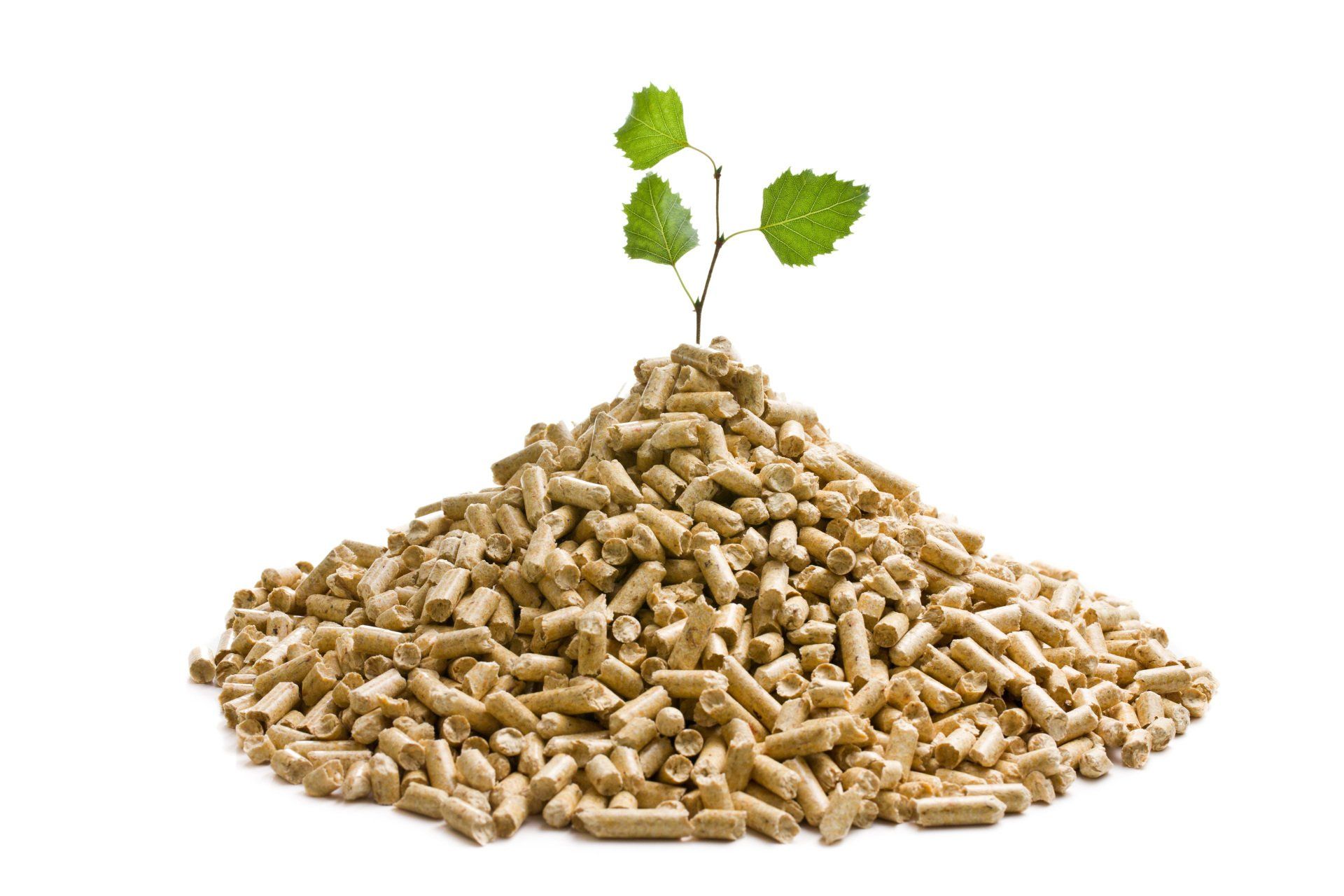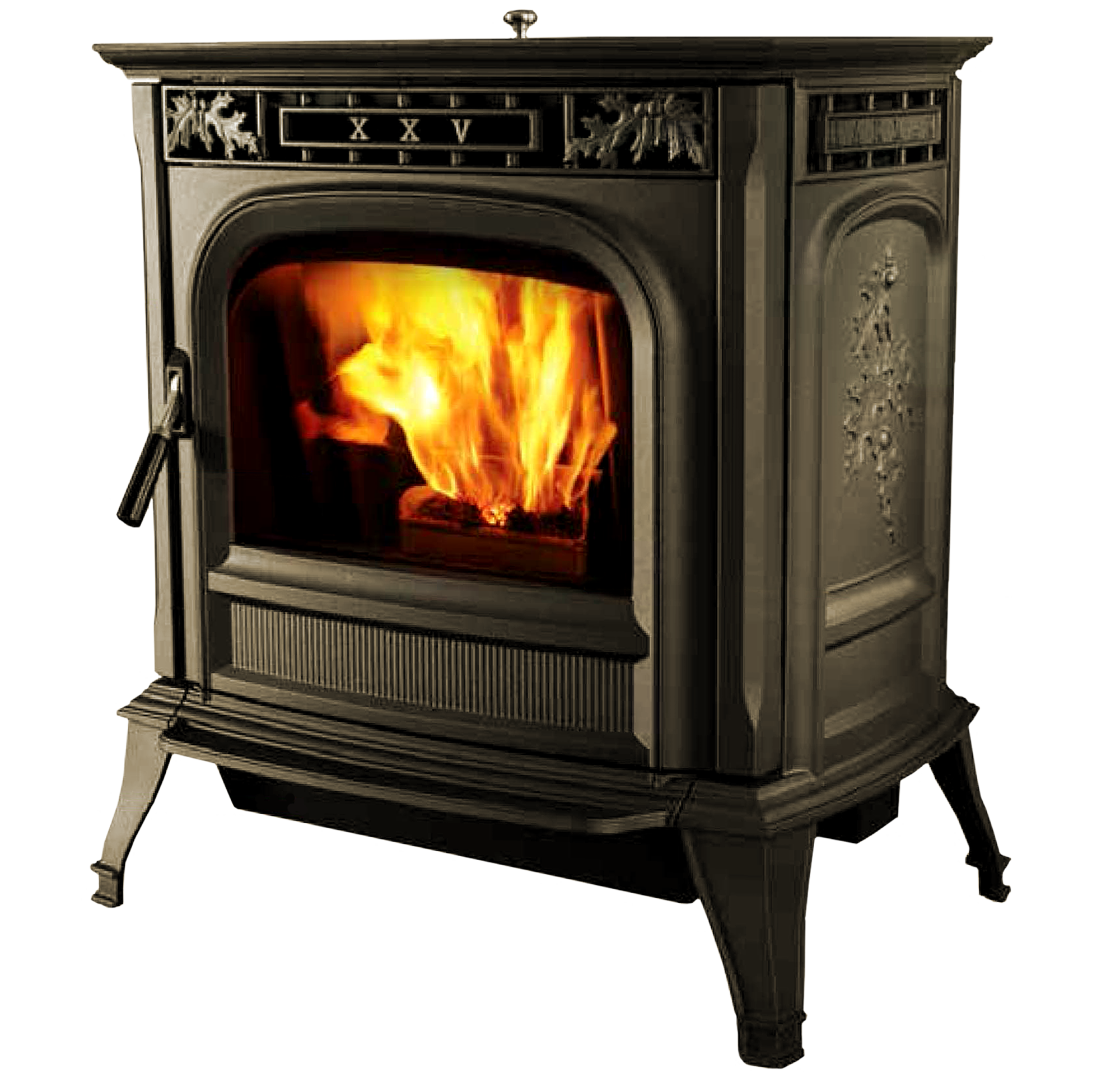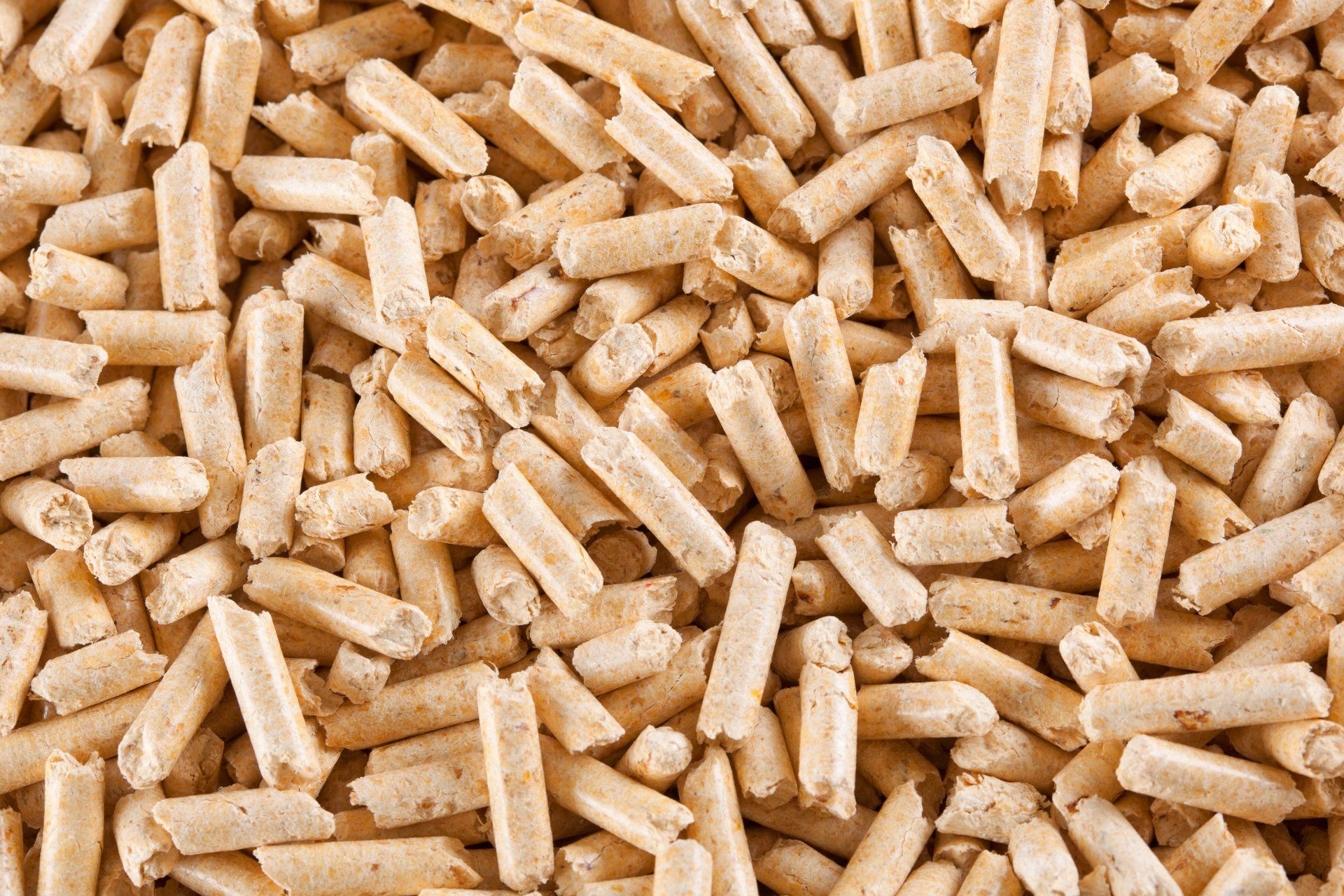Energy-saving Wood and Pellet Heating: Part 2
Department of Energy Talks About Burning Wood & Pellets For Heat : Part 2
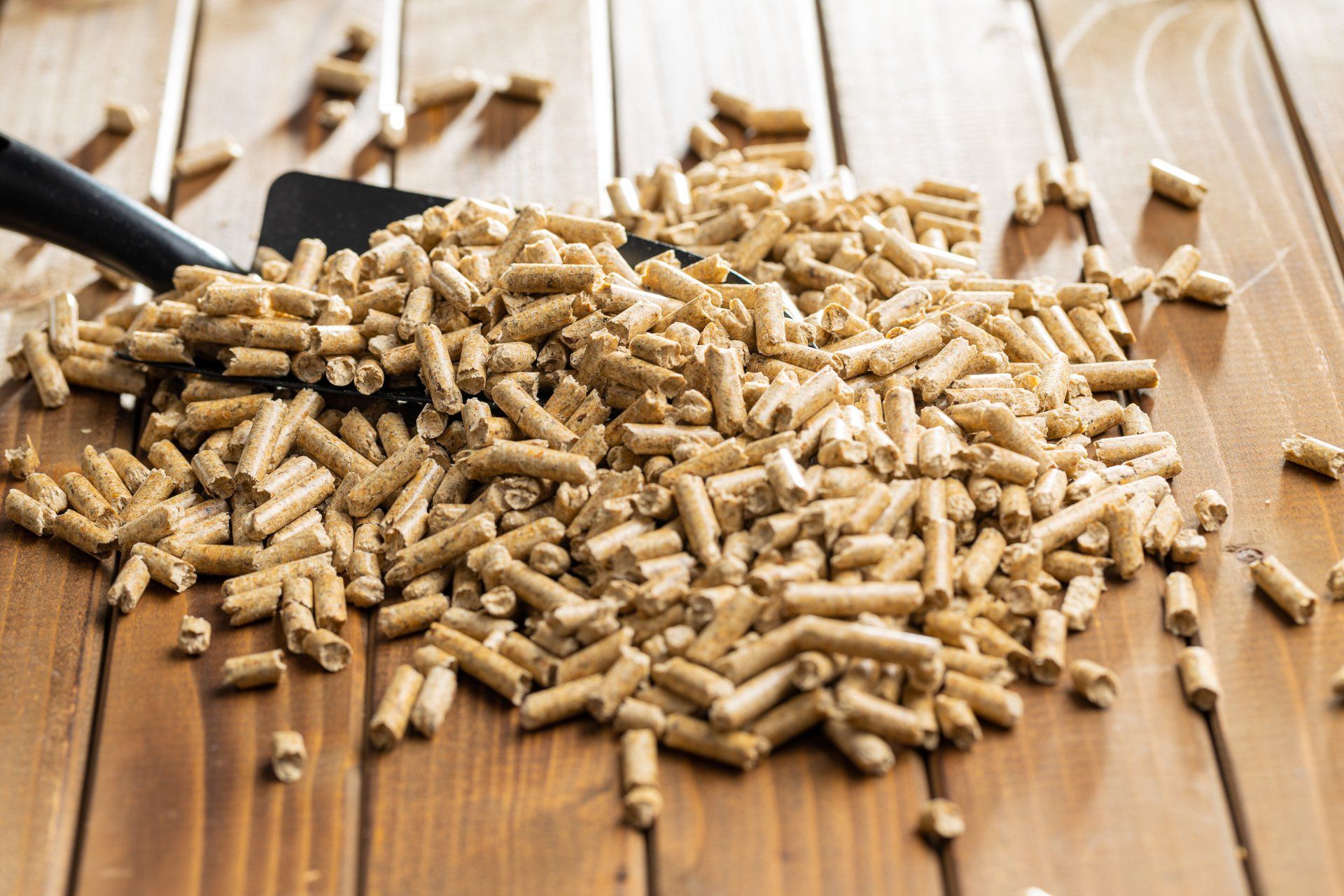
Modern wood- and pellet-burning appliances are powerful enough to heat many average-sized, contemporary homes while also burning cleaner and more efficiently. Appliances that use pellet fuel burn tiny pellets, which range in length from 3/8 to 1 inch. We will cover maintenance, wood selection and storage, chimney placement and size, and pellet fuel in part two of this series.
Chimney Placement and Sizing
Chimneys use the heat from the fire to produce what is known as the stack effect. Cooler inside air rushes through vents into the wood-burning appliance as the heat from the fire rises, giving the fire the oxygen it needs to burn. This beneficial draft will begin to flow when a fire is started with a strong hot burn. A neutral pressure zone exists within the house in between the higher and lower pressure zones. The neutral pressure zone usually moves in the direction of the biggest air leak. When the top of the chimney is higher than the ceiling of the house, the chimney's neutral pressure zone is higher than the house's neutral pressure zone. Even when there isn't a fire, a well placed chimney generates a gentle flow of air into the appliance and out the chimney.
Consider putting the chimney inside your home if you are planning or building a new one. A more conventional chimney built along a house's exterior will lose heat to the brisk outside air. The low pressure of the stack effect will draw the chilly, musty chimney air inside the house if the temperature of the chimney air drops below that of the interior air. In this case, the home has replaced the chimney as the better chimney. Thus, the room fills with smoke when a fire is kindled.
The flue size should equal the stove outlet since chimneys must match the size of the appliance. Exiting exhaust slows down if the chimney is larger than the stove or fireplace outlet, which increases creosote buildup and reduces efficiency. Chimneys with high performance also have insulation. It is possible to safely and effectively connect older masonry chimneys to more modern, high-efficiency wood-burning equipment by relining the chimneys. Again, from the appliance outlet to the chimney top, the chimney liner should be continuous. It's not unusual to spend the same amount on the chimney as you would on your appliance.
Free-standing woodstoves release their exhaust into a piping system that is connected to the chimney. Consider purchasing double-layer pipe with a 1-inch gap between pipe layers if the connecting pipe is longer than 8 feet (such as in a vaulted ceiling). Modern stoves that are efficient generate a lot of heat. A longer single-layer pipe can emit a significant amount of this heat, slowing the draft and reducing the overall efficiency of your wood-burning system.
Maintenance
You must regularly maintain your wood- or pellet-burning system to keep it running effectively and safely.
Have a chimney sweep certified by the Chimney Safety Institute of America evaluate your wood-burning system annually, preferably just before each heating season. A certified chimney sweep should have the skills to check the efficiency and safety of your appliance, hearth, connecting pipe, air inlets, chimney, and all other components in addition to cleaning the chimney.
Every two cords of wood consumed, catalytic combustors need to be inspected and replaced in accordance with the manufacturer's instructions. To assist you check the combustor, most catalytic stoves and inserts offer a space for a thermometer. The cost of the changeable, detachable catalytic cell ranges from $75 to $160. If burning seasoned wood, catalysts in recent models, particularly those built after 2005, should only need to be changed once every 5-8 years. Prior to the year 2000, older catalytic stoves require more frequent inspections and catalyst replacements.
A wood-burning device will heat more effectively if the inside is frequently cleaned out using a wire brush. Soot accumulation of even 0.1 inches might reduce heat transfer efficiency of the metal by 50%.
It's crucial to operate and maintain pellet-fuel appliances according to the manufacturer's recommendations. Maintain fans and motors properly by performing routine inspections. At the conclusion of the heating season, manufacturers advise removing any unused pellets from the stove hopper and feed system. This lessens the possibility of rusting, which might cost the appliance a lot of money to repair. Additionally, it makes it easier to fire the appliance at the beginning of the upcoming heating season. To avoid soot buildup, regularly clean the flue vent.
How to Choose and Store Wood
When fully dried, all wood species have a same heat (Btu) content per pound. Therefore, denser woods typically cost more and burn for a longer period of time. Overnight, woods like oak, hickory, and pine will burn.
You should select wood that has been well seasoned because burning damp wood might waste a lot of energy. A spring harvest of properly seasoned wood is followed by a summer of drying. Look for wood that is uniform in color and free of green. It should have a weight-based moisture content of 20% or below.
In case termites find the woodpile, store your wood far from the home. Cover only the top of the pile; leave the sides exposed to allow air to flow. To keep the wood dry, store it if at all feasible one foot from the ground (on concrete blocks, for instance).
Fuel Pellets
Typically, 40-pound (18-kg) bags of pellet fuel cost $3 to $4 each, or around $180 to $250 for a ton. Two to three tons of pellet fuel are typically used annually by homeowners who use a pellet device as their primary source of heat. Electric resistive heating, oil, and propane-fueled appliances are virtually always more expensive to run than those that run on pellet fuel.
The moisture percentage of most pellet fuels ranges from 5% to 10%. A typical percentage of well-seasoned firewood is 20%. Few pellet producers employ either petroleum- or non-petroleum-based lignin as a lubricant throughout the pellet production process, but the majority do not.
The PFI Standards Scheme, a third-party accreditation program that offers criteria for fuel of both residential and commercial quality, was introduced by the Pellet Fuels Institute. When certified pellets are purchased, this standard guarantees the client will receive the best pellet possible.
Examining the bag for excessive dirt and dust, which can create clinkers in the stove, is another way to assess the quality of pellet fuel. The amount of dust in a 40-pound (18-kg) bag shouldn't be more than a half-cup. When utilized with pellets that have a greater ash level, pellet stoves that are intended for low-ash content (usually top-fed stoves) tend to perform poorly. Numerous producers of pellet appliances are revamping their products to burn pellets with different ash contents.
The majority of pellet fuel appliance dealers either have a stock of pellets on hand or may suggest a supplier. Inquire at a nearby tree nursery or home and garden supply businesses, or search the local phone book under "Fuel" or "Pellet Fuel."
We here at Pellets Now would like to thank the Department of Energy for such a great reference. To read their article and learn more please visit their website at https://www.energy.gov/energysaver/wood-and-pellet-heating .
